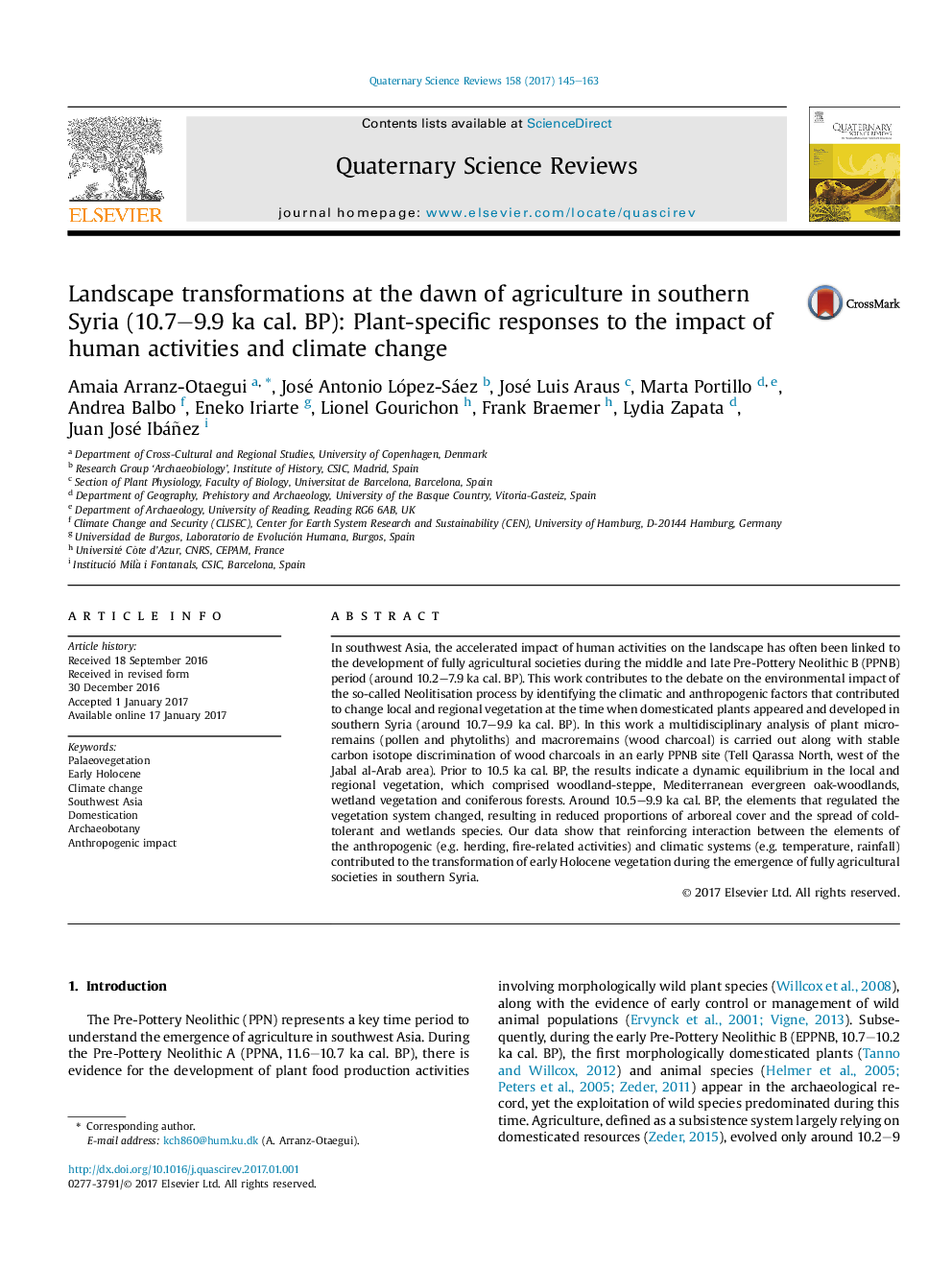| کد مقاله | کد نشریه | سال انتشار | مقاله انگلیسی | نسخه تمام متن |
|---|---|---|---|---|
| 5786824 | 1640777 | 2017 | 19 صفحه PDF | دانلود رایگان |

- Multi-proxy analyses reveal diverse vegetation around 10.7-9.9 ka cal. BP.
- Cereals were domesticated in wetter conditions than at present in southern Syria.
- Dynamic equilibrium of plant communities from 10.7 to 10.5 ka cal. BP.
- RCCs as trigger for the expansion of cold-tolerant and wetland vegetation.
- Increased anthropogenic impacts and RCCs coincided with decreased arboreal cover.
In southwest Asia, the accelerated impact of human activities on the landscape has often been linked to the development of fully agricultural societies during the middle and late Pre-Pottery Neolithic B (PPNB) period (around 10.2-7.9 ka cal. BP). This work contributes to the debate on the environmental impact of the so-called Neolitisation process by identifying the climatic and anthropogenic factors that contributed to change local and regional vegetation at the time when domesticated plants appeared and developed in southern Syria (around 10.7-9.9 ka cal. BP). In this work a multidisciplinary analysis of plant microremains (pollen and phytoliths) and macroremains (wood charcoal) is carried out along with stable carbon isotope discrimination of wood charcoals in an early PPNB site (Tell Qarassa North, west of the Jabal al-Arab area). Prior to 10.5 ka cal. BP, the results indicate a dynamic equilibrium in the local and regional vegetation, which comprised woodland-steppe, Mediterranean evergreen oak-woodlands, wetland vegetation and coniferous forests. Around 10.5-9.9 ka cal. BP, the elements that regulated the vegetation system changed, resulting in reduced proportions of arboreal cover and the spread of cold-tolerant and wetlands species. Our data show that reinforcing interaction between the elements of the anthropogenic (e.g. herding, fire-related activities) and climatic systems (e.g. temperature, rainfall) contributed to the transformation of early Holocene vegetation during the emergence of fully agricultural societies in southern Syria.
Journal: Quaternary Science Reviews - Volume 158, 15 February 2017, Pages 145-163